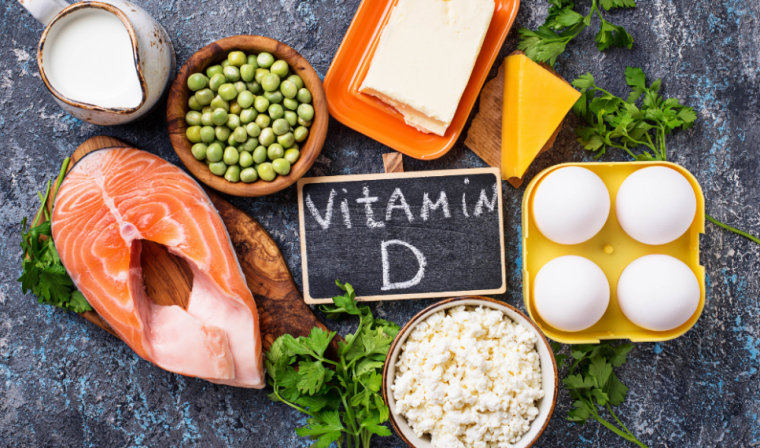

Written by Rachel Hannah [1] Registered Dietitian at the Guelph Health and Performance Centre
Vitamin D is a fat-soluble vitamin which helps support bone health, muscle function, cell growth and immunity and deficiencies have been linked to a higher risk of upper respiratory tract infections1.
Help to prepare yourself for cold and flu season by following these vitamin D tips from the Health and Performance Centre’s Registered Dietitian, Rachel Hannah.
What are the health benefits of Vitamin D?
Vitamin D has many effects on immune cells which help to limit inflammation. It’s also involved in the synthesis of proteins that fight bacteria.
How Much Vitamin D Do I Need?
The current vitamin D recommendation is based on how much we need to protect bones.
Adults should get 800 to 2,000 IU of vitamin D from a supplement year-round to maintain a sufficient level of nutrients in the bloodstream. Some individuals may need more though.
If you’re not sure if you have a vitamin D deficiency, speak to your doctor and request a blood level check. Baseline testing is justified at any time of the year, especially if low status may be suspected, otherwise, the best time to assess your vitamin D is either at the end of the summer (or early fall) or during the winter.
Tips for Increasing Your Vitamin D
You can get Vitamin D through your diet, sun exposure, and via supplements1.
Diet:
It is always best to get nutrients from whole foods whenever possible, however, this is difficult with vitamin D because very few foods contain it naturally. Foods like salmon and tuna are among the best sources as well as fortified fluids including milk, many non-dairy milks, and some brands of orange juice.
For most people, the quantities of vitamin D present in food are insufficient to maintain adequate vitamin D status, and vitamin D obtained from diet alone is not enough.
Speak to our Dietitian to learn more about how you can increase your vitamin D intake through your diet.
Supplementation:
Dietary supplements are often regarded as the best way to obtain the necessary vitamin D stores during the colder seasons in Canada when sunlight exposure is low.
Supplements are available in both the D2 and D3 forms and are measured in international units (IU). Vitamin D supplements are typically sold in bottles of 400, 500, 600 or 1000 IU tablets whereas multivitamins often contain between 200 – 600 IU of vitamin D.
Not sure which supplement brand or levels are appropriate for you? Book a consultation with our Dietitian who can help you determine the best supplements for your personal requirements.
Sun Exposure:
Exposure to ultraviolet (UV) light can play an important role in your vitamin D intake and help build stores. On average, the skin can synthesize about 10,000-20,000 IU of vitamin D in less than 30 minutes of exposure (it is recommended that adults should get 800-2,000 IU of vitamin D from a supplement year-round)2. In Canada, Vitamin D from sunlight exposure can only be synthesized in your bare skin during the late spring, summer and early fall months, from around 10am – 2pm, when the UV index is above 31.
The amount of time and vitamin D that is synthesized from sun exposure is dependent on the individual and can be affected by numerous factors including skin pigmentation, age, clothing coverage, use of sunscreen and body fat percentage. Caution is recommended when factoring in the amount of sun exposure is right for you, and it is important to consider that UVA and UVB rays have been linked to an increased risk for cancer. Please enjoy the sun safely.
Please note, this article is not intended as medical guidance, and it is recommended that you speak with your physician or Registered Dietitian about appropriate levels and consumption of vitamin D.
Book a Consultation with our Registered Dietitian
519-767-5011 [2]
References
-
Multiple Sclerosis Society of Canada. Vitamin D Fact Sheet. https://mssociety.ca/library/document/38cuveX9sSrF0QEZ1DfOMUaBilKTyRJk/original.pdf [3]
-
The United States Olympic Committee. Vitamin D Fact Sheet. https://www.northwestern.edu/sportsmedicine/services/sports-nutrition/assets/vitamin-d-fact-sheet-2015.pdf [4]
